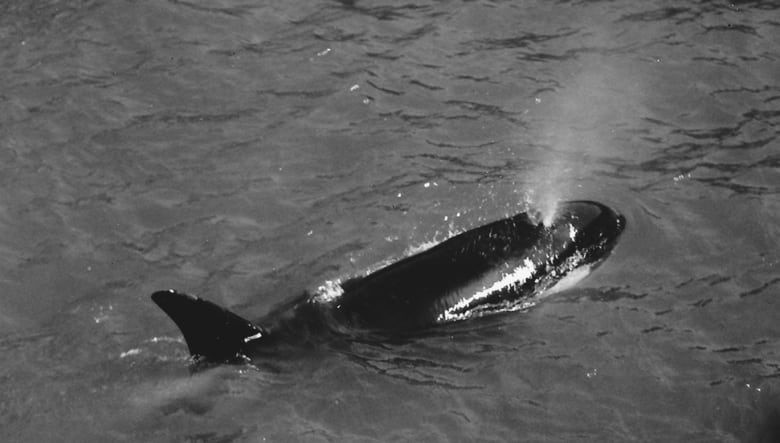How Moby Doll changed the worldview of 'monster' orca whales

In July, 1964, a killer whale was captured off the coast of Saturna Island in B.C. Hunters had meant to kill the orca to use as a model for a sculpture at the Vancouver Aquarium. But the harpoonist only injured the whale and it was towed back to Vancouver.
A one day public viewing reportedly drew more than 20,000 people to the drydock where he was first housed. The orca was named Moby Doll.
Author of The Killer Whale Who Changed the World Mark Leiren-Young argues that Moby Doll was a disruptor — changing forever the way we view orca whales.
"Naming the whale Moby Doll really changed everything. Instead of envisioning Moby Dick who was the stuff of nightmares and horror movies, you were picturing Moby Doll who was this cute, cuddly creature," Leiren-Young tells The Current's Anna Maria Tremonti.
"If you want a disruptor moment, it was naming that whale Moby Doll."

Far from living up to the reputation as a fearsome predator, Moby Doll soon earned the reputation as "Vancouver's beloved pet whale."
Leiren-Young shares a story of how harpoonist and artist Sam Burich — who'd been terrified of whales — suddenly wanted to become "the whale's friend."
"Sam [Burich] would sit by the side of the pool playing his harmonica in the hopes that that would somehow communicate with the whale," says Leiren-Young who says Burich was concerned about Moby Doll's mental health.
Moby Doll only survived three months in captivity but Leiren-Young says in that short time, he not only changed public perception of whales but also inspired a whole generation of scientists to take up whale research and learn more about how these creatures live and communicate in the wild.
"This whale really gave a sense of hope that we could change... that we could learn things we could change."
Listen to the full segment at the top of this web post.
This segment was produced by The Current's Liz Hoath.
